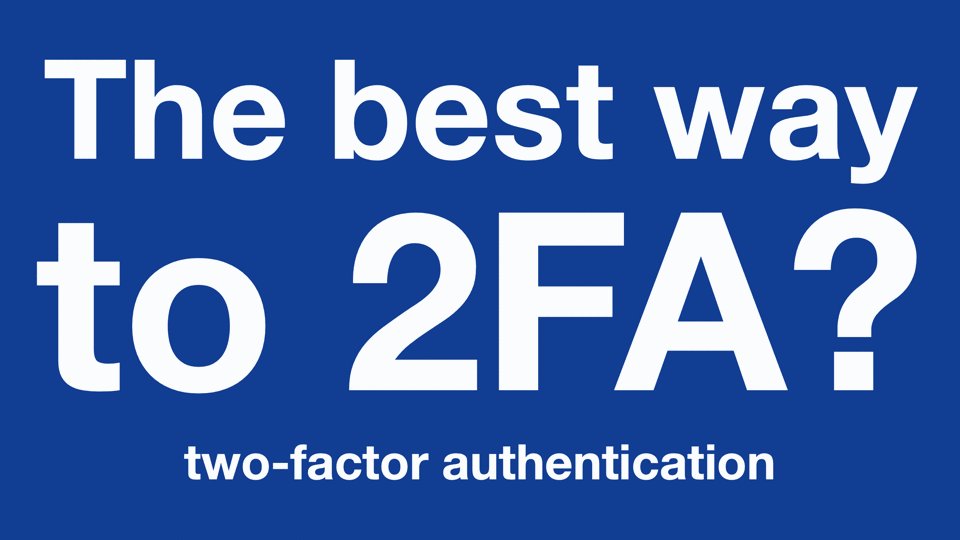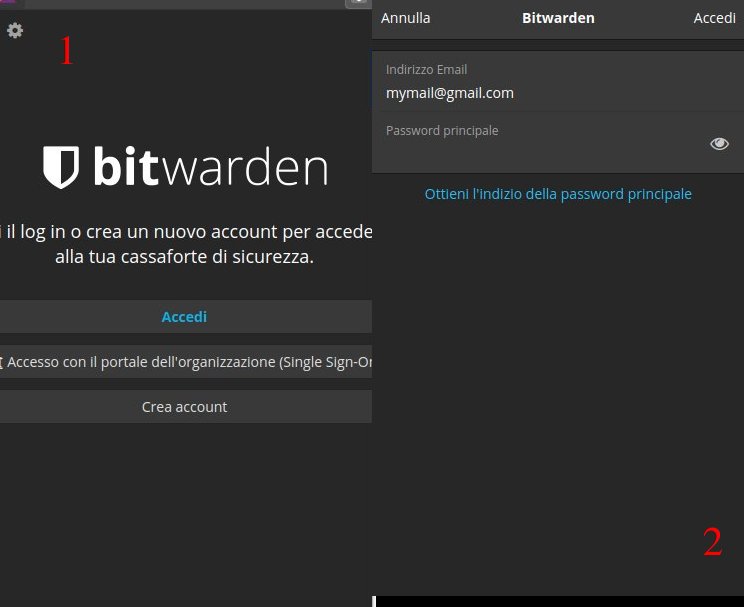Bitwarden has business customers that also use Smartcard ID systems for other purposes, so there is no wrong thing to add this possibility (if it’s not too complicated ofc). I cannot stress enough that I posted a feature request in hope that developers will see it and think about it. Locate 2FA When logged into your Bitwarden account, click on the “Down” arrow to the right of your account icon (or the generic image if you haven’t added an image yet.). Then click “My Account.” In the next window, in the left-side navigation, click “Two-step Login.”. Bitwarden can now be used to replace existing 2FA apps such as Authy or Google Authenticator that you may be using for two-step login across your online accounts. Use the Bitwarden mobile app to add the authenticator key directly to a login in your vault. Support for using your mobile device’s camera to scan QR codes is built right in. Using Two-step Login (also called Two-factor Authentication, or 2FA) to protect your Bitwarden Vault prevents a malicious actor from accessing your Vault even if they discover your Master Password by requiring authentication from a secondary device when you log in. If you’re unfamiliar with the basics of 2FA, check out our Field Guide. Two-factor authentication (2FA) Free users can secure their Bitwarden Vaults using a Time-based One-Time Password (TOTP) or email verification for two-factor authentication. Premium users can also use 2FA methods such as Duo, YubiKeys, and other FIDO U2F -compatible USB or NFC devices. Check out our ' what is 2FA ' page if you are new to this.
I’ve used Authy for several years to generate mytime-based one-time passwords(TOTP)for two-factor authentication(2FA). For variousreasons, I recently migrated to using Bitwardeninstead.
Google Authenticator Issues
Many services recommend using GoogleAuthenticator for 2FA. Ioriginally used it before switching to Authy, but I switched for a reason thatis still valid today: it doesn’t have any sort of backup or syncingfunctionality.
Check out thereviewsto get a sense of how often people get burned by switching to a new phone forwhatever reason and realizing they’ve lost all their codes or need to go througheach service one by one and set up 2FA again.
Google Authenticator is also a neglected app. The Androidappwas last updated on September 27, 2017, and the iOSapp was lastupdated on September 12, 2018. You could argue that these are relatively simpleapps that don’t need frequent updates, but take a look at what other apps likeandOTPand Aegis offer in terms of functionality that GoogleAuthenticator doesn’t have, like being able to search for a service instead ofhaving to scroll though the entire list to find it.

Authy Issues

While I have happily used Authy for several years, I also have some issues withit that caused me to look for a replacement.
No Browser Extension
Authy doesn’t have a browser extension forFirefox, my primary browser. This is aproblem because an extension can offer some protection againstphishing, one of the main securityweaknessesof using TOTP for 2FA. If the extension fails to find an entry that matches thecurrent domain, that can alert me to a possible phishing attempt.
The Chromeextensionalso hasn’t been updated in two and a half years and will no longer besupported goingforward.
No Web Client
Authy doesn’t have a web client. While this could be considered a securityfeature, I’d rather have the option to access my codes through any browser in anemergency. It’s a security vs. usability tradeoff that I’m willing to make.
No CLI Client
Authy doesn’t have a CLIclient. I have some ideas for personal browser automation projects that could beeasier to implement with programmatic access to my TOTP codes.
Mac CPU Usage
I use the Mac desktop program, but when it has a code open, the program usessignificantly more CPU. Here’s the CPU usage when it’s just displaying the listof services.
And here’s the CPU usage when it’s showing the TOTP code.
Since I don’t want the program to unnecessarily drain my laptop battery, I tryto remember to press the back button after copying the code. There’s no optionto automatically go back on copy or to just copy the code from the list viewwithout even seeing the code.
Authentication and Recovery

When you create an Authy account, you have to provide a phone number rather thanan email address or username. I didn’t like this to begin with since I want asfew things tied to my phone number as possible, given how often phone numbersget hijacked.
Authy thenencouragesyou to add the app to your other devices and then disable the multi-devicefeature. This means that your codes will keep working on your existing devices,but to add Authy to a new device, you need access to one of your old ones totemporarily re-enable multi-device and to grant access to the new device. If youdon’t have access to an old device, you have to go through a 24 hour accountrecoveryprocess.
However, I want to be able to regain access to my 2FA codes, even if I’ve lostaccess to all my devices. For example, I could be in a foreign country withoutmy laptop and then lose my phone. I want to have a good contingency plan forthis kind of situation.
Note that Authy doesn’t support an account level password. It does support apassword for your encrypted backups, but you don’t enter that until after youlog in.
Authy also doesn’t support TOTP codes orU2F security keys forprotecting itself. Its sole authentication mechanism (beyond account recoveryprocesses) is access to an old device.

Yubico Authenticator
I considered using my YubiKeys to generate TOTP codesusing YubicoAuthenticator,but a YubiKey can only store32TOTP secrets, and I already have 49 of them since I enable TOTP-based 2FAwhenever possible.
Bitwarden
I currently use LastPass to manage my passwords,but I am going to switch to 1Password soon. I decidedto use Bitwarden as well but solely for TOTP codes. Celestron 44300 windows 7 driver. 1Password can also handleTOTP codes, but I am willingto deal with the hassle of having two password managers to avoid using the sameservice for both passwords and 2FA.
By using a password manager for TOTP, I get broad cross-platform support with aweb client, browser extensions, desktop programs, mobile apps, and even a CLIclient. I also get standard authentication mechanisms, including 2FA support.
This does mean that I am treating my TOTP codes more like secondary passwords(something Iknow)rather than as something Ihave.Authy’s requirement to have access to an old device better fits the latterprinciple. This is a deliberate choice on my part.
Note that Bitwarden requires a premium account that costs $10 a year in order togenerate TOTP codes. A premium account also adds U2F support, which I wanted aswell.
Authentication Strategy
U2F support is the last component of my authentication strategy. Going forward,it will be like this: I’ll store passwords in 1Password and TOTP secrets inBitwarden. I’ll use separate, high entropy masterpasswords that will only exist in my head.
1Password requires a secret key inconjunction with the master password in order to log in on a new device. Since Ican’t memorize it, I plan to store my secret key as a staticpasswordon my YubiKeys. This means that if I touch the metal contact for a few seconds,it will type out the secret key for me.
For both services, I’ll add all my YubiKeys for 2FA. This means that all I needis one of my YubiKeys (one of which is on my keychain) and the master passwordsin my head to regain full access to all of my accounts.
However, I can’t guarantee that I’ll be able to use my YubiKey on every device.For example, Bitwarden doesn’tsupport U2F inits mobile apps. I would also be paranoid about feeling like I need two YubiKeyswhen I travel in case I lose one.
My plan to deal with these issues is to also set up TOTP-based 2FA for both1Password and Bitwarden. I’ll print those TOTP secrets, along with the 1Passwordsecret key, on a small card and laminate it. I can make multiple copies to putin my wallet and my bag. Sometimes being overly prepared is fun in itself, eventhough it might be overkill.
Migration
To migrate to Bitwarden, I went through my Authy list one by one. In theory, I’dbe able to just copy the TOTP secret to Bitwarden, but Authy doesn’t expose thesecret.
Bitwarden 2fa
For each account, I logged in and reset 2FA to add the secret to Bitwarden. ThenI deleted the account from Authy. Authy marks it for deletion and then waits 48hours before actually deleting it in case you made a mistake.
Time life classic soft rock rapidshare search. I did have trouble with adding some services, such asAlgolia and npm, that onlyshow the QR code and don’t have an option to display the TOTP secret. The QRcodes encode URIs that look like this, asdocumentedin the Google Authenticator wiki:
I tried using my phone camera’s built-in QR scanner, but I couldn’t see the fullURI and opening it would open Authy, with no other option. I used GoogleLens instead to grab the secret. In retrospect, I wasonly having trouble because I was adding the services to Bitwarden through thebrowser extension. I should have installed the mobile app from the beginning andused that because it has an option to scan QR codes.
I also had trouble with adding Twitch, which has aspecific integration with Authy instead of providing a generic QR code. To getaround the issue, I followed thisguide.You can use the deprecated Authy Chromeappto retrieve the TOTP secrets and configurations. This method entails usingChrome’s developer tools to execute customcode toprint the information.
This revealed that Twitch uses 7 digit codes instead of the standard 6 and 10second intervals instead of the standard 30.
At this point, I thought I hit a Bitwarden limitation because I mistakenlyassumed that the extension would only take the TOTP secret in the authenticatorkey field.
However, I discovered that Bitwardensupportsputting the full URI with configuration into that field. I tested it and wasable to log in to Twitch using the code generated by Bitwarden.
Bitwarden 2fa Lost Phone
Conclusion
Migrating to Bitwarden took me about a full day, but I’m happy with the result.I’ve been using the Bitwarden browser extension to log in to accounts for thepast week, and it is much nicer than using the Authy desktop program. Next up ismigrating from LastPass to 1Password.

Comments are closed.